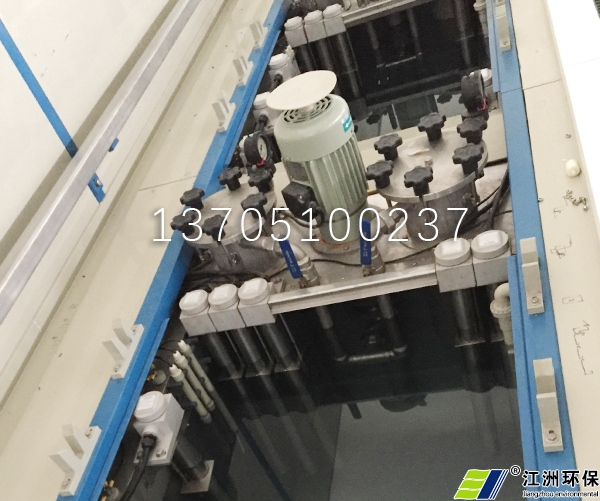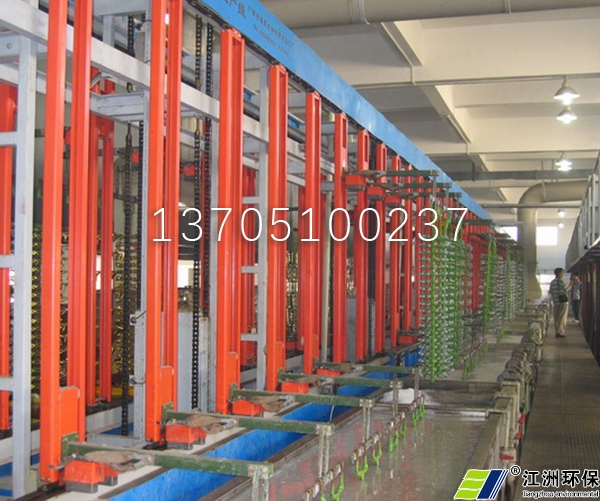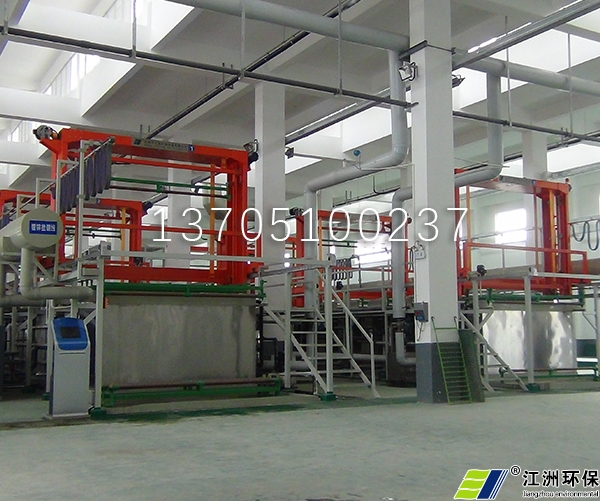The main source of zinc in electroplating and metal processing wastewater is the towing solution for electroplating or pickling. The pollutants are transferred to the rinsing water through the metal rinsing process. The pickling process includes first immersing the metal in strong acid to remove the oxide on the surface, and then immersing it in the brightener containing strong chromic acid for polishing. The wastewater contains a large amount of hydrochloric acid, zinc, copper and other heavy metal ions and organic brighteners, which are highly toxic. Some of them also contain carcinogenic, teratogenic and mutagenic highly toxic substances, which are extremely harmful to human beings. Therefore, electroplating wastewater must be seriously recycled to eliminate or reduce its environmental pollution.
Electroplating sewage treatment equipment consists of regulating tank, dosing tank, reduction tank, neutralization reaction tank, pH regulating tank, flocculation tank, inclined tube sedimentation tank, chamber filter press, clean water tank, air flotation reaction, activated carbon filter, etc.
 Electroplating wastewater treatment equipment There are mainly the following methods.
Electroplating wastewater treatment equipment There are mainly the following methods.
1. Air flotation
The air flotation method is to introduce air into the water to produce tiny bubbles. Because of the adhesion between bubbles and tiny suspended solids, a flotation body is formed. The floating action of bubbles is used to float up to the water surface to form foam or scum, so that the suspended substances in the water can be separated. According to the different ways of bubble generation, it can be divided into three categories: inflatable air flotation, dissolved air flotation and electrolytic air flotation.
Air flotation is a new solid-liquid separation method instead of precipitation method. In Shanghai Tongji University successfully applied air flotation to treat electroplating heavy metal wastewater for the first time. Subsequently, due to the continuous processing, compact equipment, less land occupation and easy automation, it has been widely used.
The air flotation solid-liquid separation technology has strong adaptability and can treat chromium plating wastewater, chromium containing passivation wastewater and mixed wastewater. It can not only remove heavy metal hydroxides, but also other suspended solids, emulsified oil, surfactants, etc. The principle of the air flotation method used to treat chromium plating wastewater is: under acidic conditions, ferrous sulfate and hexavalent chromium carry out oxidation-reduction reaction, and then produce flocs under alkaline conditions. Under the action of countless micro bubbles, the flocs will surface to make the water quality clear.
2. Ion exchange method
The ion-exchange method for electroplating wastewater treatment is mainly a method that uses the exchange ions in the ion-exchange resin to exchange with some ions in the electroplating wastewater to remove them, so that the wastewater can be purified.
At present, ion exchange method is widely used to treat electroplating wastewater containing chromium and nickel in China, and there are mature experiences in design, operation and management. After treatment, the water can meet the discharge standard, and the effluent quality is good, which can generally be recycled. The regenerated eluent saturated by resin exchange adsorption can be reused in the plating tank after the composition adjustment and purification of the electroplating process, basically realizing closed circuit circulation. In addition, ion exchange method can also be used to treat wastewater containing copper, zinc, gold, etc.
3. Electrolytic method
The electrolytic method of electroplating wastewater treatment is mainly to make the harmful substances in the wastewater undergo oxidation and reduction reactions on the positive and negative poles respectively through the electrolytic process, and transform them into harmless substances; Or use electrode oxidation and reduction products to react with harmful substances in wastewater to generate water insoluble sediment, and then separate and remove or recover metals through electrolytic reaction.
Electrolytic treatment of electroplating wastewater is generally used in small and medium-sized plants. Its main characteristics are that it does not need to add treatment agents, the process is simple, the operation is convenient, and the production site is small. At the same time, due to the high purity of the recovered metal, it has good economic benefits for the recovery of precious metals. However, when the treated water volume is large, the electrolysis method consumes more power and consumes more iron plates. At the same time, the separated sludge is not easy to dispose as the chemical treatment method, so it has been less used.
4. Extraction method
The extraction method is to use a solvent that is insoluble in water but can dissolve some substance in water (called solute or extract) to add it into the wastewater, so that the solute can be fully dissolved in the solvent, thus separating and removing or recovering some substance from the wastewater. The extraction process includes three main processes: mixing, separation and recovery.







